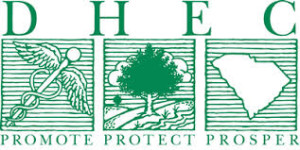In 2009 when I had a Campylobacter infection it took me a few days of puking and diarrhea to go to my doctor. Then it took a week for the lab results. And then it took another week for the county folks to follow up with me about a food history.
Our conversation revolved around food that I had consumed a month prior (within the window of exposure).
Outbreak investigations can be messy.
According to the Island Packet (in South Carolina), the S.C. Department of Health and Environmental Control is investigating a couple of clusters of salmonellosis that appear not to be linked.
State health officials have yet to determine if eight Beaufort County salmonella poisoning cases in the past three weeks stem from a common source. Neither have any new cases been reported to the S.C. Department of Health and Environmental Control since the agency first confirmed last week a team is investigating a possible outbreak, DHEC spokeswoman Cassandra Harris said Friday.
However, the longer an investigation takes, the less likely the team will pin down a common source, she added.
“While efforts are made to identify the cause of salmonella clusters, the success of those efforts often depends on the cooperation of those involved and their recollection of what they ate,” Harris said. “As time passes, we are less likely to be able to identify a potential source for the illnesses.”
Harris also dispelled rumors that many more people in the county might be sick.
“At this time, there are no other indications of an unexpected increase in illnesses in the community” apart from the reported cases, Harris said (although CDC estimates that there are 38 related Salmonella illnesses for ever confirmed case due to underreporting -ben).
DHEC is also helping the U.S. Centers for Disease Control and Prevention investigate a separate, single case of salmonella poisoning that matches a national cluster of salmonella, Harris said.
However, DHEC and CDC investigators have not identified a common source of infections within that national cluster, according Laura Burnworth, a spokeswoman for the CDC’s Division of Foodborne, Waterborne and Environmental Diseases.
